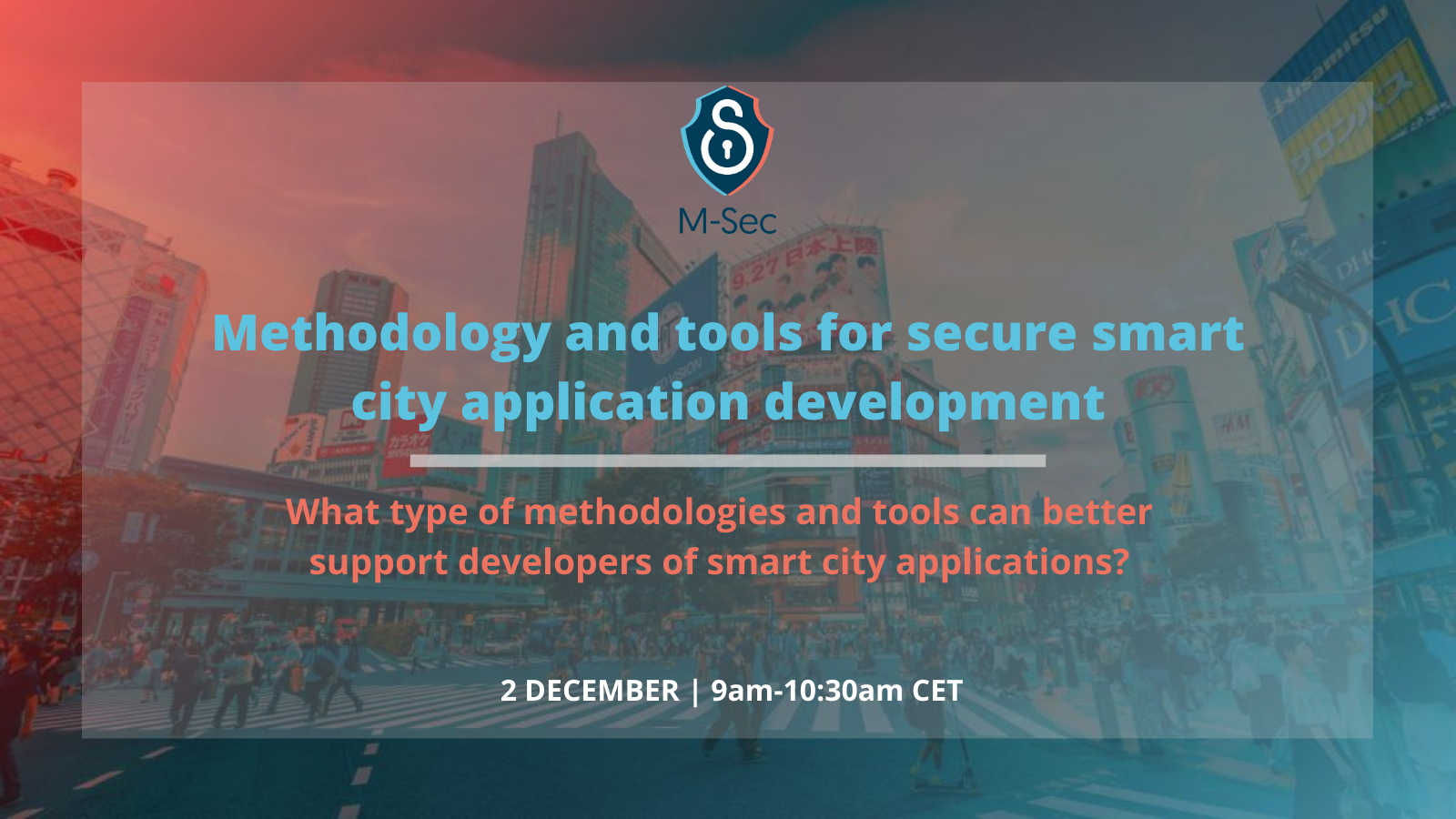Next Wednesday the M-Sec solution will again be on the spotlight, as its 5th Webinar returns to the explanation of its multi-layered architecture and to our researchers discussion on their main achievements so far
What type of methodologies and tools can better support developers of IoT applications, which citizens so commonly use nowadays, either in their personal computers or smartphones? The M-Sec project will try to answer this question by organizing a Webinar next Wednesday, 2nd of December, at 9am CET (Brussels Time), free of charge, through Zoom (by accessing with this link: https://us02web.zoom.us/j/83313763120).
This will be M-Sec’s 5th Webinar of a series of Webinars that intend to showcase the project’s results, after two years of intensive research on how the M-Sec architecture could better solve cyber-security challenges in hyper-connected smart cities, and it will be dedicated to the application layer of the M-Sec solution, the one that most closely touches our lives as citizens.
In order to further understand the importance of this layer in the scope of the M-Sec solution and for fighting cyber-attacks, we have interviewed our two experts who will be joining us next Wednesday: Nobukazu Yoshioka, from Japan’s National Institute of Informatics (NII), and Kenji Tei, from Waseda University. According to them, “although smart city platforms assure security and privacy-awareness in its data collection and distribution, application-level vulnerabilities will violate security and privacy requirements” and, this is why IoT applications which we all so commonly use nowadays, either in our personal or work computers, tables or smartphones, “should be carefully designed and implemented to eliminate such vulnerabilities”.
So why is the M-Sec application layer so important for security and privacy of the data citizens exchange daily through the multiplicity of applications they use? Because “the application layer of the M-Sec solution provides tools and methodologies to support engineers to develop secure and privacy-aware smart city applications on top of the smart city platform”, our experts highlight. Therefore, “engineers should address a variety of design aspects to ensure security in smart city application development”. According to our experts, a security analysis tool which is being developed in the scope of M-Sec, “allows engineers to efficiently reuse a wide variety of existing knowledge on secure smart city application design. Smart city application should be carefully implemented and tested to ensure its correctness, but it costs a lot. Our controller synthesis tool automatically generates a Node-Red program with formal guarantees on its correctness”.
But what have been the implementation challenges so far, regarding this layer of the M-Sec technology?According to our experts, even though M-Sec has cutting-edge techniques, tools, and methodologies, these “have been validated with limited types of applications”. Still our experts are going to apply them to pragmatic smart city application development during the project to evaluate the applicability and are confident of positive results to efficiently fight cyber-attacks and ensure personal data protection in a context of hyper-connected devices and applications, as it is the case of smart cities.
In M-Sec’s upcoming Webinar, our experts will present fact-based objective information on the current state of the application-level security layer that is being developed – and its real-life application in the cities of Santander and Fujisawa, the problems they are facing and how they are thinking about overcoming them.
Your opinion matters! We want to have your feedback on the overview, current status, and benefit of our experts techniques, tools, and methodologies, envisioning smart city application development in the near future.
Register here for the Webinar


